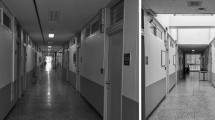Abstract
A process is described to acquire geometrical data of the target object and to utilize it to rapidly create a near-net-shape component with flexible tooling system. The topological data acquisition of the object is made possible using a robot-assisted stereo-imaging technique. Stereo-image data is translated into CAD data, and subsequently the geometric data constitutes the basis for the path planning for the tooling process. A novel, rapidly reconfigurable tooling system and tool forming technology is employed by which a six-axis robotic arm is used to shape a discretized vacuum surface. Pre-heated thermoplastic sheets are formed over the shaped vacuum tool to generate near-net-shape parts. The parts may be trimmed and used as the final component or they may be used as molds for subsequent fabrication of composite components. We demonstrate the process first in the context of an abstract reference part. One of the many applications envisaged using this process is the manufacture of custom-made braces, masks, and guards for use in healthcare products. A patient intervention can have their features acquired using stereo imaging and have corrective measures incorporated into the product prior to manufacturing. Since the geometrical data acquisition process does not require physical contact, the method can be used for patients having epidermal or skeletal damage. Furthermore, employing the rapidly reconfigurable tooling technology will significantly reduce the process cycle time and permit complete customization, benefiting the patient with a quicker and more effective administration of medical assistance. The healthcare context of the proposed integrated process is demonstrated with the manufacture of an orthopedic component with personalized fit.
Similar content being viewed by others
References
Milroy MJ, Weir DJ, Bradley C, Vickers GW (1996) Reverse engineering employing a 3D laser scanner: a case study. Int J Adv Manuf Tech 12(2):111–121. doi:10.1007/BF01178951
D'Apuzzo N (2006) State of the art of the methods for static 3D scanning of partial or full human body. 3D Modelling, Proceedings of Conference, June 13–14, 2006, Paris, France
Kawasaki H, Furukawa R, Nakamura Y (2006) 3D acquisition system using uncalibrated line-laser projector. Proceedings of the 18th International Conference on Pattern Recognition
Helicon Focus. HeliconSoft. http://www.heliconsoft.com/heliconfocus.html. Accessed 15 April 15 2010]
Valkenburg RJ, McIvor AM (1998) Accurate 3D measurement using a structured light system. Image Vis Comput 16:99–110
Zein I, Hutmacher DW, Tan KC, Teoh SH (2002) Fused deposition modeling of novel scaffold architectures for tissue engineering applications. Biomaterials 23:1169–1185
Masood SH, Song WQ (2004) Development of new metal-polymer material for rapid tooling using fused deposition modeling. Mater Des 25:587–594
Bertrand Ph, Bayle F, Combe C, Goeuriot P, Smurov I (2007) Ceramic components manufacturing by selective laser sintering. Appl Surf Sci 254:989–992
Wang Y, Shi Y, Huang S (2004) Selective laser sintering of polyamide rectorite composite. Proc Inst Mech Eng Part L: J Mater: Des Appl 219(1):11–15
Rao PVM, Dhande SG (2002) A flexible surface tooling for sheet-forming processes: conceptual studies and numerical simulation. J Mater Process Technol 124:1–2
Tadin T (2005) Method and system for capturing and supporting 3-D contour. U.S. Patent No. 6,904,692. U.S. Patent and Trademark Office, Washington, D.C.
Haas E, Schwarz C, Papazian JM (2002) Design and test of a reconfigurable forming die. J Manuf Process 4(1):77–85
Walczyk DF, Lakshmikanthan J, Kirk DR (1998) Development of a reconfigurable tool for forming aircraft body panels. J Manuf Syst 17(4):287–296
Walczyk DF, Hardt DE (1999) A comparison of rapid fabrication methods of sheet metal forming dies. J Manuf Sci Eng 121:214–224
Gallagher J, Cipra R and Siegmund T (2008) Molding processes and tool therefor. U.S. Patent Pending. U.S. Patent and Trademark Office, Washington, D.C.
Berteau J (1994) Variable-shape mold. U.S. Patent No. 5,330,343. U.S. Patent and Trademark Office, Washington, D.C.
Walczyk D, Im Y (2000) A hydraulically-actuated reconfigurable tool for flexible fabrication: implementation and control. J Manuf Sci Eng-Trans ASME 122(3):562–568
Kaufman S and Spletzer B (2000) Methods for freeform fabrication of structures. U.S. Patent No. 6,080,343. U.S. Patent and Trademark Office, Washington, D.C.
Nakajima N (1969) A newly developed technique to fabricate complicated dies and electrodes with wires. Bull JSME 12(54):1546–1554
Author information
Authors and Affiliations
Corresponding author
Rights and permissions
About this article
Cite this article
Paul, A., Gallagher, J.M., Cipra, R.J. et al. Robotic manufacturing of near-net-shape components utilizing stereo imaging and reconfigurable tooling. Int J Adv Manuf Technol 63, 999–1009 (2012). https://doi.org/10.1007/s00170-012-3979-5
Received:
Accepted:
Published:
Issue Date:
DOI: https://doi.org/10.1007/s00170-012-3979-5




